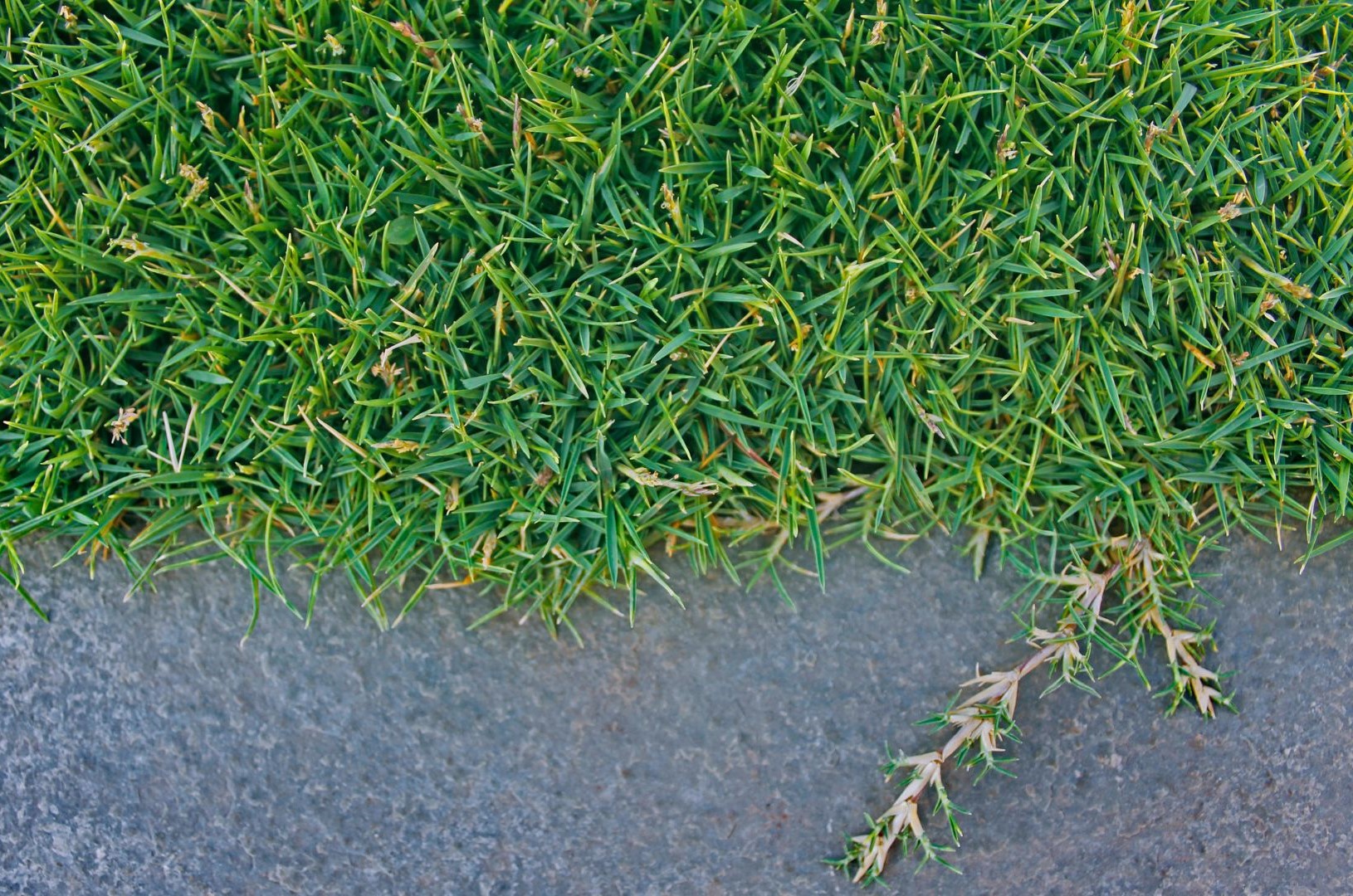Turfgrass: Benefits, Types and Care Guidelines
Unlocking the Science of Turfgrass: Growing Green Fields
What is a turfgrass?
Turfgrass is a low-growing ground cover with an extensive fibrous root system. Although turf is not the main part of a landscape, it could cover the larger area of a landscape. In the United States, turf is about 35,850 km2 (Milesi et al., 2005). Turfgrass benefits the environment, society, economy, and even beautification. These benefits are the reasons turfgrass is planted and utilized in many places.
Turfgrasses are classified into:
- Cool season grass: the most commonly used cool season grasses are: annual bluegrass, colonial bentgrass, creeping bentgrass, fine fescues, Kentucky bluegrass, perennial ryegrass, tall fescue, and velvet bentgrass.
- Warm season grass: the most commonly used warm season grasses are: common bermudagrass, hybrid bermudagrass, bahiagrass, buffalograss, carpetgrass, centipedegrass, seashore paspalum, St. Augustinegrass, Zoysiagrass.
Benefits of Turfgrass
- Atmospheric benefits: turf absorbs atmospheric pollutants such as nitrogen dioxide, ammonia, ozone, sulfur dioxide, lead, and volatile organic compounds (Stier et al., 2013) and improves air quality. For example, turfgrass sequesters carbon, which is then stored in the soil as organic carbon. The world is looking for many ways to reduce atmospheric carbon dioxide concentrations, and carbon sequestration is just one of them (Follett et al., 2011).
- Water Filtration: turfgrass acts as a natural filter to prevent soil erosion and rainwater from percolating through the soil. This process is essential in recharging groundwater and protecting water bodies from sedimentation. A buffer strip of Kentucky bluegrass has a similar groundwater recharge rate as a grass prairie and results in a reduction in drainage water volume compared to the absence of a buffer area (Steinke et al., 2009).
- Soil conservation: The extensive fibrous root of turfgrass helps to knit the soil together. It allows unsuitable land to be utilized by communities, for example, recreational parks. The turnover of plant tissues adds organic matter to the soil and thereby improves soil carbon, nitrogen, and fertility, which in turn increases the soil’s water-holding capacity and cation-exchange capacity.
- Carbon footprint reduction: Turfgrass requires fewer resources to maintain when compared to other ground coverings. When carefully managed, it can reduce many carbon footprints of landscaping practices.
- Aesthetic Value: Aside from the many environmental benefits, turfgrass also contributes to the aesthetics of urban and suburban landscapes. Turf provides a green color for most of the year, and some still have ornamental values when dormant; for example, zoysiagrass (Zoysia spp.) gives a straw gold color when dormant. The low cut of turf gives a feeling of openness that cannot be compared to trees or shrubs, and that is why it is said to be a focal point in a landscape.
- Noise reduction: Turfgrass can absorb and dampen sound by its structure and density. It absorbs noises better than hard surfaces, and multidirectional light reflectance between the leaves reduces glare.
- This is especially beneficial in areas where quietness is desired.
- Economic benefits: In 2002, the United States turfgrass industry generated about $57.9 billion in revenue and provided about 822,849 jobs (Haydu et al., 2006). These include sod farms, lawn care services, golf courses, sports turf, lawn equipment manufacturing, and garden retail stores. Studies have also found that homes with a good turfgrass landscape increase by 5 to 11% in value (Behe et al., 2005).

Turf Establishment – How to establish turfgrass
Establishing turf is a process that involves preparing the soil by conducting a soil test, grading, grass selection, and maintaining the turf through a growth phase. Aside from sowing grass seeds, other methods of establishment are:
Popular methods of establishing a turfgrass
- Sodding: one of the effective methods of establishing grasses, it involves the transplanting of established turf from one area to another. It provides mature turf in a single day with uniform and weed-free sod if quality is high.

Figure 1: Stack of Zoysiagrass sod
- Springing and Stolonizing: involves spreading of stolons rather than seeding on the soil surface. It is one of the most effective ways of establishing stoloniferous grasses. It is also used to uniformly provide turf of one genetic type.


Figure 2: Bermuda stolons growing in the soil. Courtesy: UC IPM
- Plugging: Small pieces of sod are transplanted in the soil intermittently. Plugs can be obtained by cutting sod strips or removing from intact sod with a plugger.

Figure 3: Zoysiagrass plugs
Turfgrass Management – How do you manage turf?
Mowing
The most common cultural practice applied to turfgrass is mowing (Busey & Parker, 1992). However, studies have shown that grasses do not thrive on mowing; they only tolerate it (Christian et al., 2017). Mowing is presumed to be stressful because it removes tissue from the plant that would otherwise be used for photosynthesis, thereby depriving it of the ability to produce carbohydrates needed to function (Huang et al., 2006). Mowing also cuts through the outer cuticle, causing an injurious wound that allows the entry of fungal organisms. However, these grasses are some of the best-equipped plants to tolerate defoliation on earth. The rule of thumb is that no more than one-third of the aboveground tissue should be removed in a single mowing. Removal of more than 40% can stop root growth for as long as two weeks.
Irrigation – Water needs of turf
One key factor that determines the plant’s need for water is evapotranspiration (ET). This term can be represented in two processes:
- evaporation, meaning water loss from the soil surface, and
- transpiration, meaning water loss from the plant.
Water is lost through transpiration in the turf due to their canopy covering the soil surface. Factors that affect ET are temperature, humidity, wind speed, and solar radiation. The need for irrigation in turf depends on the climatic zone; it is possible to grow turf at a higher mowing height without supplemental irrigation in a cool, humid region if species are properly managed. Drought occurs not only in summer, but desiccation can also occur from drying during winter (Christians et al., 2017). During the winter-winter drought, desiccation is likely to occur from drying. Water is necessary in arid regions, and it is usually a major concern when making the maintenance budget (Christians et al., 2017).
To schedule irrigations, you need to consider the evapotranspiration losses, the ability of soil to hold/retain water, the root depth, the infiltration rate, and the type/species of turf grown. The annual need for warm-season grasses is around 40 to 60 inches of water (up to 1.6 million gallons per acre or 400-600 mm per hectare). However, deficit irrigation can also be beneficial.
Ιf you are interested in learning more things about ornamentals, read the following articles:
- Create a Permaculture Garden – Step By Step
- The Advantages of Maintaining Natural Vegetation in Tree Crops
References
https://aggie-hort.tamu.edu/plantanswers/turf/publications/water.html
Behe, B., J. Hardy, S. Barton, J. Brooker, T. Fernandez, C. Hall, J. Hicks, R. Hinson, P. Knight, R. McNiel, T. Page, B. Rowe, C. Safley, and R. Schutzki. 2005. Landscape plant material, size, and design sophisti- cation increase perceived home value. J. Environ. Hort. 23:127–133.
Busey, P., and J. H. Parker. 1992. Energy conservation and efficient turfgrass maintenance in D.V.
Waddington, R. N. Carrow, and R. C. Shearman, eds., Turfgrass. Agronomy Monograph 32. ASA, CSSA, and SSSA, Madison, WI, pp. 473–500
Christians, N. E., Patton, A. J., and Law Q. D. 2017. Fundamentals of turfgrass management. John Wiley & Sons, Inc
Follett, R., S. Mooney, J. Morgan, K. Paustian, L. H. Allen, Jr, S. Archibeque, J. M. Baker, S. J. Del Grosso, J. Derner, and F. Dijkstra. 2011. Carbon Sequestration and Greenhouse Gas Fluxes in Agriculture: Challenges and Opportunities. Council for Agricultural Science and Technology (CAST), Ames, IA.
Haydu, J. J., A. W. Hodges, and C. R. Hall. 2006. Economic impacts of the turfgrass and lawncare industry in the United States. University of Florida IFAS Extension Pub. FE632.
Huang, B., X. Liu, and Q. Xu. 2006. Low-carb diet. USGA Green Sect. Rec. 44(2):10–12.
Milesi, C., S. W. Running, C. D. Elvidge, J. B. Dietz, B. T. Tuttle, and R. R. Nemani. 2005. Mapping and modeling the biogeochemical cycling of turf grasses in the United States. Environ. Mgt. 36:426–438.
Steinke, K., J. C. Stier, and W. R. Kussow. 2009. Prairie and turfgrass buffer strips modify water infiltration and leachate resulting from impervious surface runoff. Crop Sci. 49:658–670.
Stier, J. C., K. Steinke, E. H. Ervin, F. R. Higginson, and P. E. McMaugh. 2013. Turfgrass benefits and issues, in J. C. Stier, B. P. Horgan, and S. A. Bonos, eds., Turfgrass: Biology, Use, and Management. Agronomy Monograph 56. ASA, CSSA, and SSSA, Madison, WI, pp. 105–145.
Further reading










































































